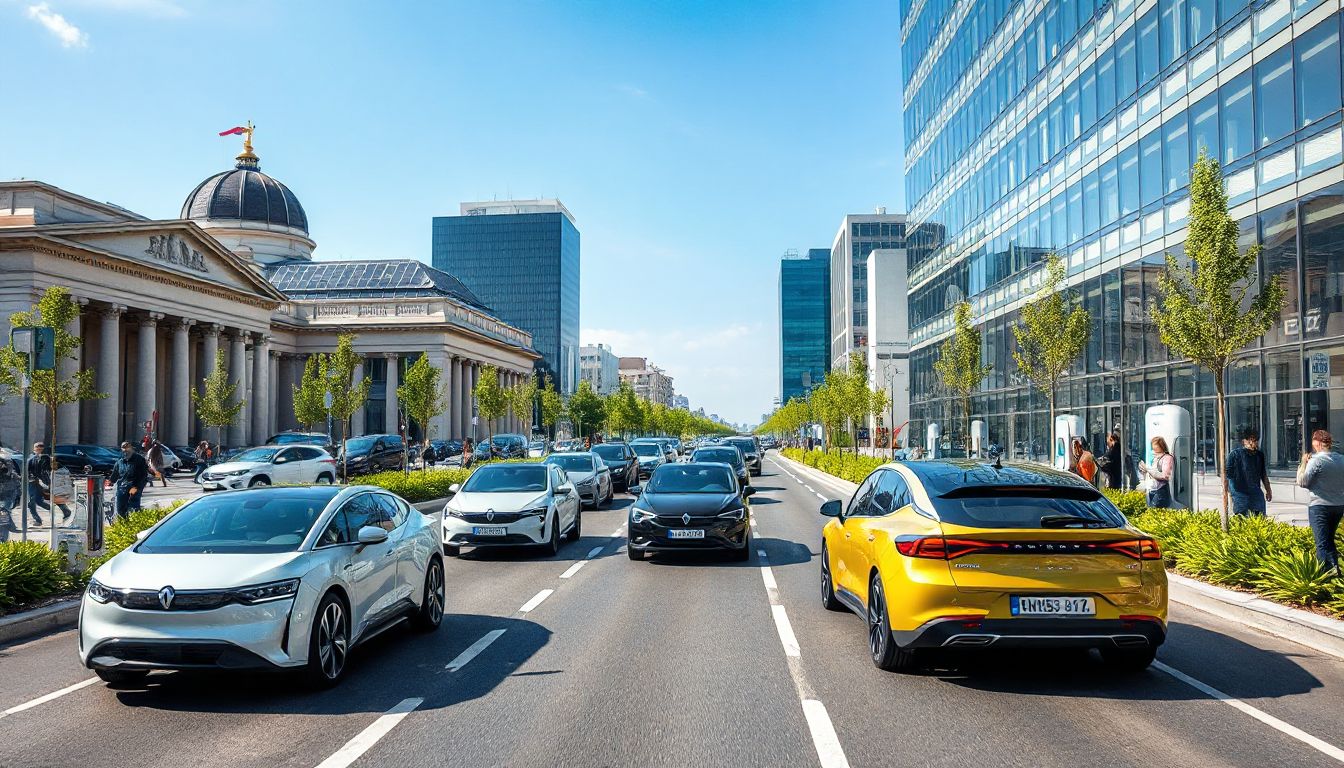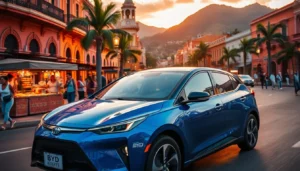Introduction
Germany is known worldwide for building some of the best cars, from luxury sedans to powerful sports cars. But now, the country is shifting toward cleaner mobility. As Europe pushes to cut pollution and fight climate change, Germany is leading the charge with a strong electric vehicle (EV) plan. This move is not just about selling cars; it’s about creating a sustainable future. Germany’s EV policy plays a big role in shaping how people move, how industries grow, and how the nation meets its environmental goals. This guide takes you through Germany’s policies, incentives, infrastructure plans, and what lies ahead.
Germany’s National Electric Vehicle Strategy Overview
Background and Evolution of EV Policies in Germany
Germany started supporting electric cars long before they became trendy. Back in the early 2000s, incentives were small, mainly tax breaks or grants. Over time, with rising emissions worries and EU pressure, policies grew smarter. Major milestones include the 2016 Climate Action Plan and the 2020 Future Mobility Strategy, each pushing for more clean vehicles. Recent laws now aim for a full shift to electric mobility by 2030.
Objectives of Germany’s Electric Vehicle Policies
Germany’s EV goals cover many fronts. The main ones are:
- Cutting greenhouse gases significantly by 2030 and through 2045 goals.
- Supporting local companies like Volkswagen, BMW, and Mercedes to lead EV innovation.
- Achieving climate neutrality by 2045, meaning no net emissions.
- Building a wide charging network to make EVs more practical everywhere.
Role of the German Government and EU Regulations
Germany works close with the European Union, making sure policies fit larger goals. The EU has set ambitious targets for all member countries, such as reducing emissions by 55% by 2030. Germany gets funding from both national budgets and EU grants, helping fuel its green transition.
Incentives and Financial Support for EV Adoption in Germany
Purchase Subsidies and Grants
The “Umweltbonus” scheme offers up to €9,000 for buying electric cars — a big help for consumers. The grant varies depending on the vehicle’s price and type, making EVs more affordable. Both private buyers and companies can qualify, encouraging wider adoption.
Tax Incentives and Reduction Measures
Electric vehicles enjoy lower registration taxes and reduced company car taxes. This makes switching to EVs more attractive for businesses and individuals alike. Why pay more when ownership costs drop?
Charging Infrastructure Funding
Germany invests heavily in charging stations. They’ve built thousands of public chargers and aim to have fast-charging corridors across highways. Plus, incentives are available for homeowners installing private chargers remotely connected to renewable sources, making charging greener.
Support for EV Manufacturers and Innovation
The government backs new tech through grants for research and start-ups. Public-private partnerships help bring new EV models and battery tech faster to market. Germany wants to stay ahead of the electric game.
Infrastructure Development and Deployment Strategies
Expansion of Charging Networks
Germany already has a solid network of charging points. Their goal? Expand faster, especially along highways and in rural areas. The plan includes hundreds of new fast chargers to cut charge times, making long trips easier.
Smart Charging and Grid Integration
Germany is working on charging systems that sync with renewable energy. Imagine your EV charging when wind or solar power is abundant. Digital tools will help drivers charge in the best times, saving money and reducing strain on power grids.
Challenges and Solutions
Demand on the grid can strain energy supply. To fix that, Germany promotes smarter charging tech. Urban areas face space constraints, so Germany encourages mini-charging hubs and shared networks, especially in cities with little room for large stations.
Regulatory Frameworks and Standards Supporting EV Growth
Emission Regulations and Zero-Emission Zones
Cities like Berlin and Hamburg now restrict older, polluting cars in certain areas. Zero-emission zones are growing, forcing drivers to upgrade or find alternatives. Soon, internal combustion engines might be banned from city centers altogether.
Automotive Policy and Certification Standards
Germany sticks to strict EU and international rules for safety and emissions. To sell an EV, manufacturers must meet these standards, ensuring safe, reliable vehicles that don’t harm the environment.
Battery Recycling and Sustainability Policies
Batteries are at the heart of EVs. Germany enforces rules to recycle and dispose of batteries responsibly. Policies also promote sustainable sourcing of raw materials, reducing the environmental impact of battery production.
Germany’s Market and Industry Landscape
Current Market Adoption and Sales Data
Germany’s EV market is booming. Recent figures show EVs now make up over 15% of new car sales, up from just 3% five years ago. Consumer interest grows as incentives and infrastructure improve.
Leading Automakers and Domestic Production
German giants like Volkswagen, BMW, and Mercedes-Benz push heavily into EVs. Many new models are in development, supported by favorable policies. These investments aim to keep Germany at the forefront of electric car manufacturing.
Challenges Facing the Industry
Supply chain issues, especially for batteries, slow down growth. Consumer awareness and familiarity still need a boost, plus rural areas lack enough charging stations. These hurdles require attention to turn EV dreams into reality.
Future Outlook and Policy Recommendations
Upcoming Policy Initiatives
Germany plans to tighten emission rules and boost incentives well beyond 2030. Smart mobility concepts, like autonomous EV taxis, will start to shape future transportation.
Opportunities for Stakeholders
For consumers, early EV adoption saves money and helps the environment. Automakers can innovate and grow, while policymakers have a chance to lead by example. Collaboration is key to realizing Germany’s green transport goals.
Global Comparisons and Lessons
Germany watches Norway, China, and the UK, learning what works best. Norway’s focus on eco-tax perks, China’s massive production, and the UK’s extensive charging network offer valuable lessons. Germany adapts these strategies to its unique strengths.
Conclusion
Germany’s electric vehicle policy is a clear blueprint for a cleaner future. Through incentives, infrastructure, and strict regulations, Germany is transforming transport and industry. The journey is far from over, but with continued effort, it can become a model for other nations. Everyone, from drivers to manufacturers, has a role to play. By working together, we can all be part of this green revolution. As Germany leads the way, it paves the path for a healthier planet and a smarter, cleaner mobility future.




